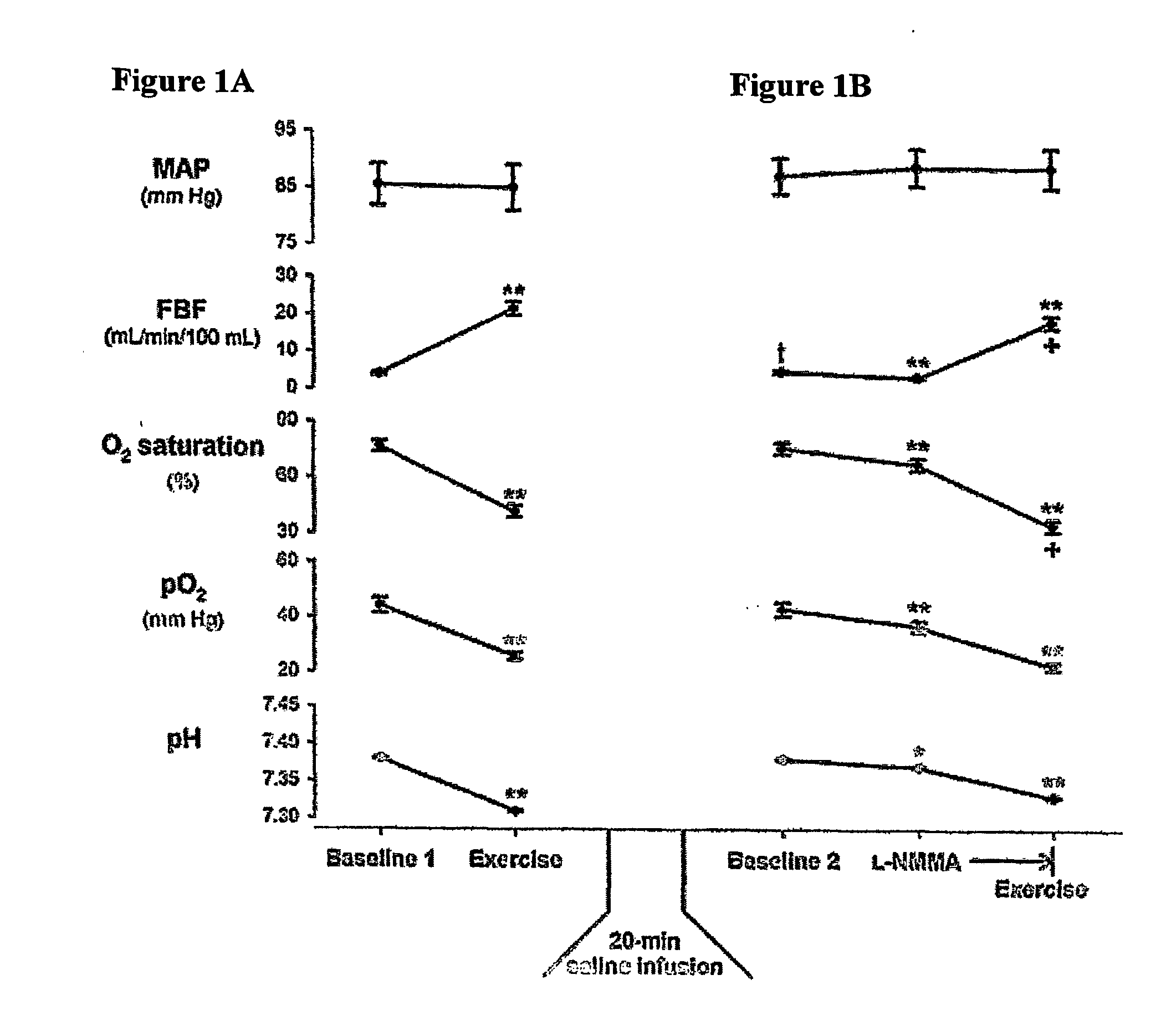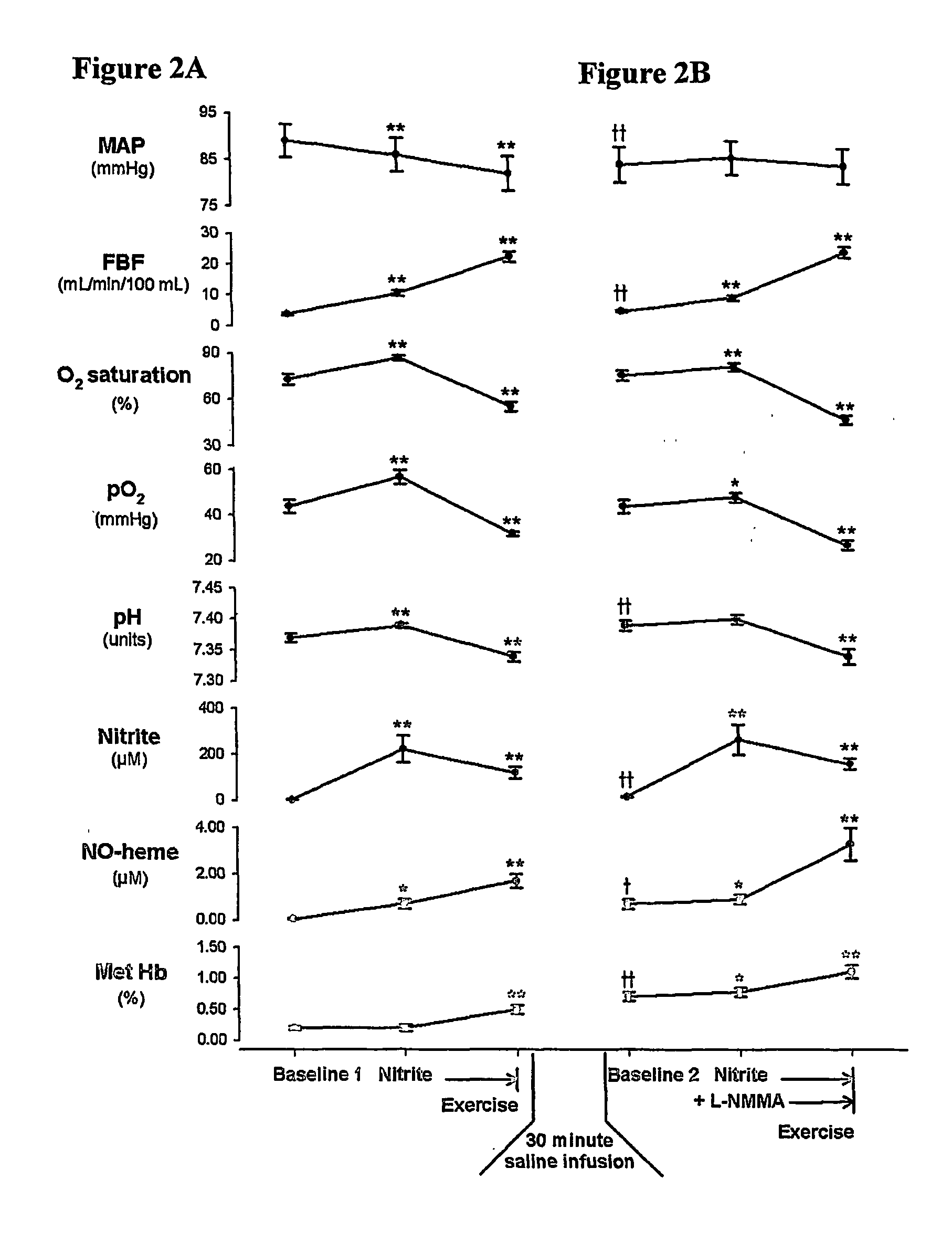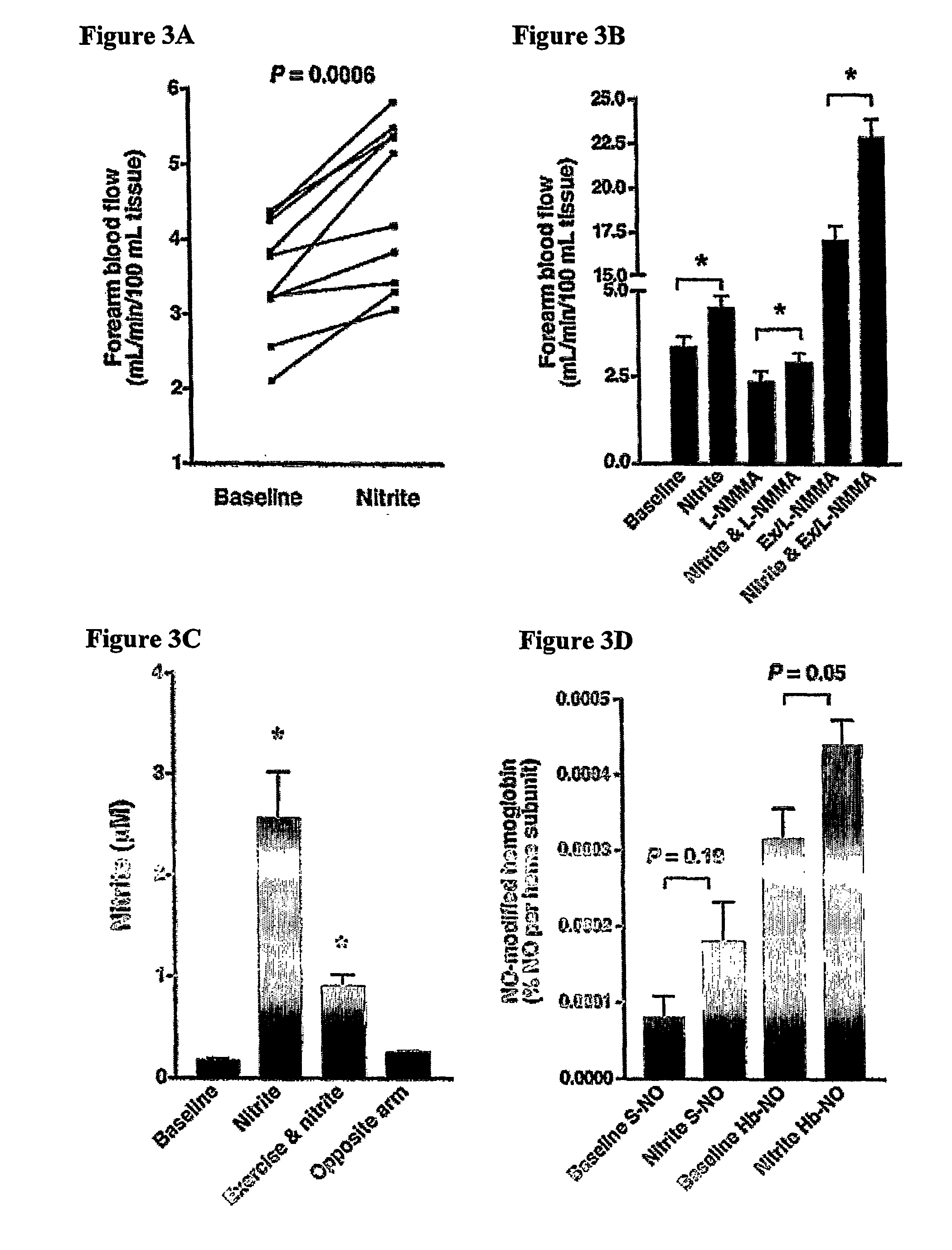Use of nitrite salts for the treatment of cardiovascular conditions
a technology of nitrite salts and cardiovascular conditions, which is applied in the direction of drug compositions, immunological disorders, extracellular fluid disorders, etc., can solve the problems of reducing the amount of methemoglobin formed, nitrites do not play a role, and precluded the use of nitrites, so as to improve blood flow, effective vasodilator effect, and effective regulating the cardiovascular system
- Summary
- Abstract
- Description
- Claims
- Application Information
AI Technical Summary
Benefits of technology
Problems solved by technology
Method used
Image
Examples
example 1
Nitrite has Vasodilatory Properties in Vivo
[0202] This example provides a demonstration that nitrite, administered by infusion to the forearm of human subjects, is an effective vasodilator.
Methods
Human Subjects Protocol.
[0203] The protocol was approved by the Institutional Review Board of the National Heart, Lung and Blood Institute, and informed consent was obtained from all volunteer subjects. Nine men and nine women, with an average age of 33 years (range 21-50 years), participated in the study. An additional 10 subjects returned three-six months later for a second series of experiments with low dose nitrite infusion. Volunteers had a normal hemoglobin concentration, and all were in excellent general health without risk factors for endothelial dysfunction (fasting blood sugar >120 mg / dL, low-density lipoprotein cholesterol >130 mg / dL, blood pressure >145 / 95 mmHg, smoking within two years, cardiovascular disease, peripheral vascular disease, coagulopathy, or any other diseas...
example 2
Cytoprotective Effects of Nitrite During Ischemia-Reperfusion of the Heart and Liver
[0225] As demonstrated in Example 1, nitrite is reduced to NO by reaction with deoxyhemoglobin along the physiological oxygen gradient, a chemistry whose rate is oxygen and pH dependent and that potentially contributes to hypoxic vasodilation. Based on that unexpected discovery, we proposed that hypoxia-dependent NO production from nitrite in ischemic tissue might limit ischemia-reperfusion injury. This example provides a demonstration that infusions of sodium nitrite are effective to provide cytoprotection during ischemia-reperfusion of the heart and liver.
[0226] Although reperfusion of ischemic tissues provides oxygen and metabolic substrates necessary for the recovery and survival of reversibly injured cells, reperfusion itself actually results in the acceleration of cellular necrosis (Braunwald et al., J. Clin. Invest. 76:1713-1719, 1985). Ischemia-reperfusion is characterized by the formation ...
example 3
Inhaled Nebulized Nitrite is a Hypoxia-Sensitive NO-Dependent Selective Pulmonary Vasodilator
[0265] This example provides a description of use of inhaled, nebulized nitrite (specifically, sodium nitrite) to treat neonatal pulmonary hypertension.
[0266] Based on the results presented above, it is now known that the blood anion nitrite contributes to hypoxic vasodilation via a heme-based, nitric oxide (NO) generating reaction with deoxyhemoglobin and potentially other heme proteins. This biochemical reaction can be harnessed for the treatment of neonatal pulmonary hypertension, an NO-deficient state characterized by pulmonary vasoconstriction, right-to-left shunt pathophysiology, ventilation / perfusion inhomogeneity and systemic hypoxemia. As shown in this example, inhaled sodium nitrite was delivered by aerosol to newborn lambs with hypoxic and normoxic pulmonary hypertension. Inhaled nitrite elicited a rapid and sustained reduction (˜60%) in hypoxia induced pulmonary hypertension, a...
PUM
 Login to View More
Login to View More Abstract
Description
Claims
Application Information
 Login to View More
Login to View More - R&D
- Intellectual Property
- Life Sciences
- Materials
- Tech Scout
- Unparalleled Data Quality
- Higher Quality Content
- 60% Fewer Hallucinations
Browse by: Latest US Patents, China's latest patents, Technical Efficacy Thesaurus, Application Domain, Technology Topic, Popular Technical Reports.
© 2025 PatSnap. All rights reserved.Legal|Privacy policy|Modern Slavery Act Transparency Statement|Sitemap|About US| Contact US: help@patsnap.com



